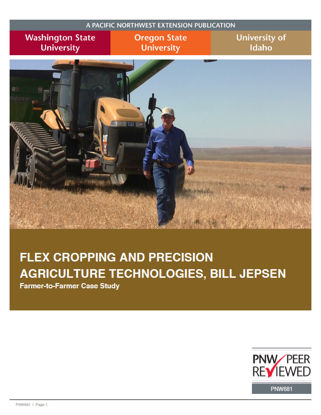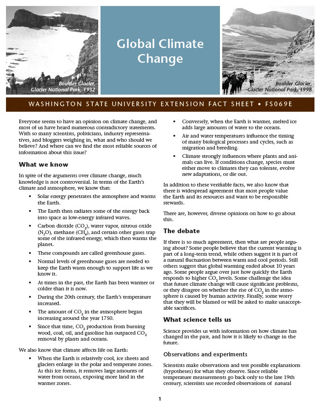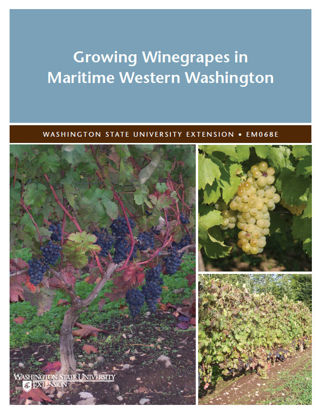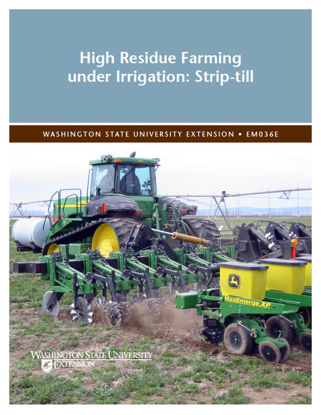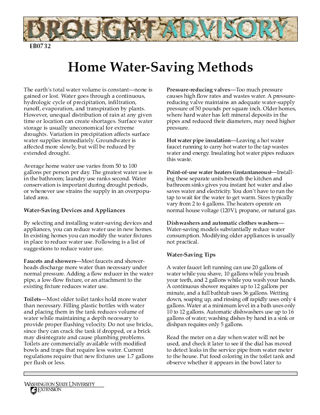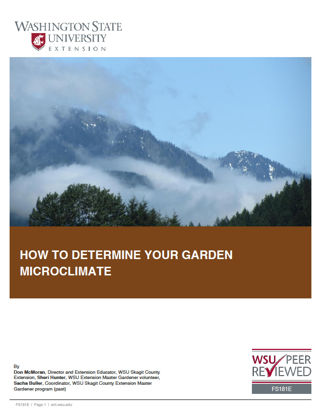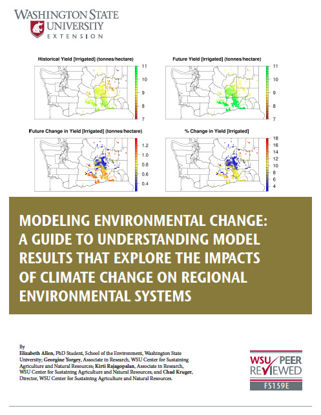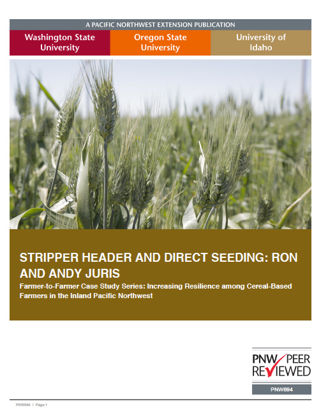You have no items in your shopping cart.
Weather and Climate
Weather and Climate
Flex Cropping: Bill Jepsen (Farmer to Farmer Case Study Series)
Bill Jepson farms in northeastern Oregon, in an area receiving 12 inches or less of annual precipitation. In this publication, Bill Jepson discusses his operation’s strategy for flex cropping to make ...
$0.00
Global Climate Change
Global Climate Change is a topic of much debate and division in the public. However, scientific studies and models agree that climate change is occurring. This factsheet presents what we know, what is ...
$0.00
Growing Winegrapes in Maritime Western Washington (Replaces EB2001)
There are many aspects to consider in order to be successful at growing grapes in the maritime climate areas of the Pacific Northwest. Quality winegrapes can be grown in western Washington, provided ...
$0.00
High Residue Farming Under Irrigation: Strip-till (5 in a series of 5)
“High Residue Farming” is an umbrella term for cropping systems in which less tillage is used in order to keep crop residue on the surface of a field. That crop residue provides many benefits to the s ...
$0.00
Home Water-Saving Methods
Water-saving devices and tips can reduce water use in the home. Faucets, shower heads, toilets, pressure-reducing valves, insulation, point-of-use water heaters, washing machines, and automatic dishwa ...
$0.00
How to Determine your Garden Microclimate
Understanding how climate affects your growing conditions is essential to successful gardening. Throughout western Washington, however, varied topography gives rise to a large number of microclimates ...
$0.00
Integrated Management of Feral Rye in Winter Wheat
This publication discusses identification and management of feral rye.
$0.00
Modeling Environmental Change: A guide to understanding results from models that explore impacts of climate change on regional environmental systems
This guide focuses on process-based environmental models, particularly those used to model climate change impacts. This type of environmental modeling plays an increasingly important role in understan ...
$0.00
Stripper Header and Direct Seeding: Ron and Andy Juris (Farmer to Farmer Case Study Series)
Ron and Andy Juris farm in Bickleton, Washington, in an area receiving about 8–12 inches of annual precipitation. In this publication, the Jurises discuss their use of a stripper header for conserving ...
$0.00

